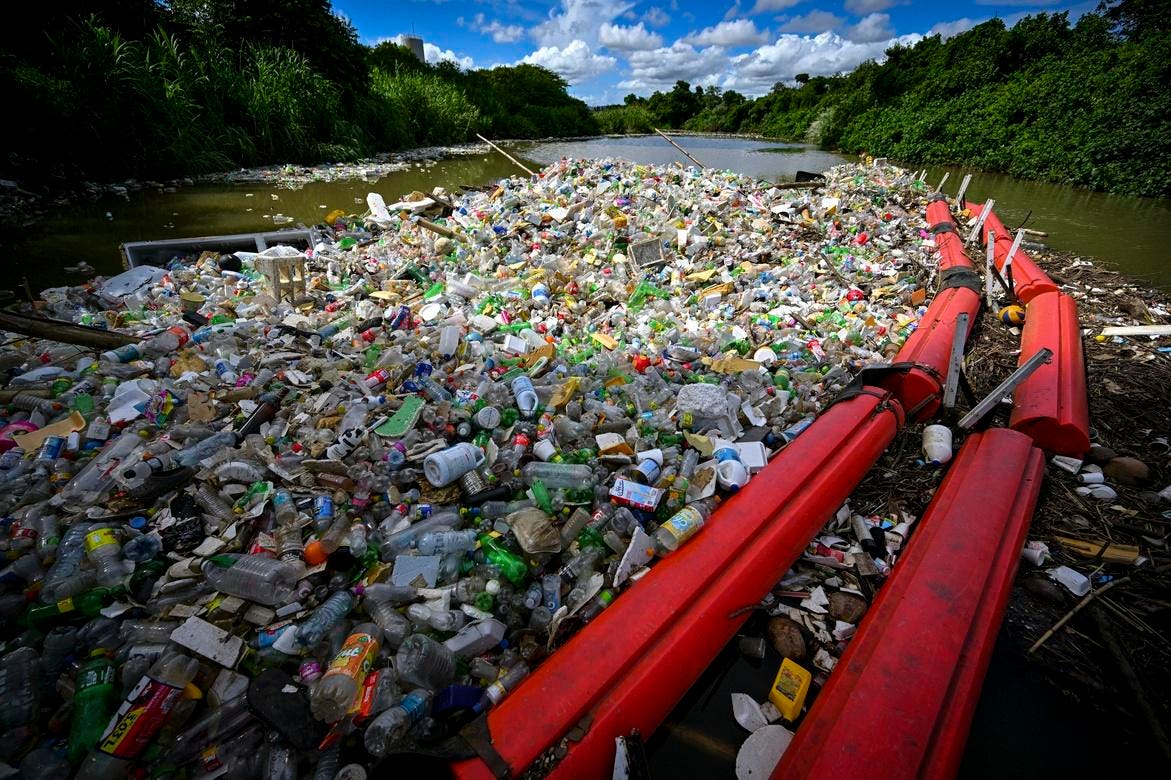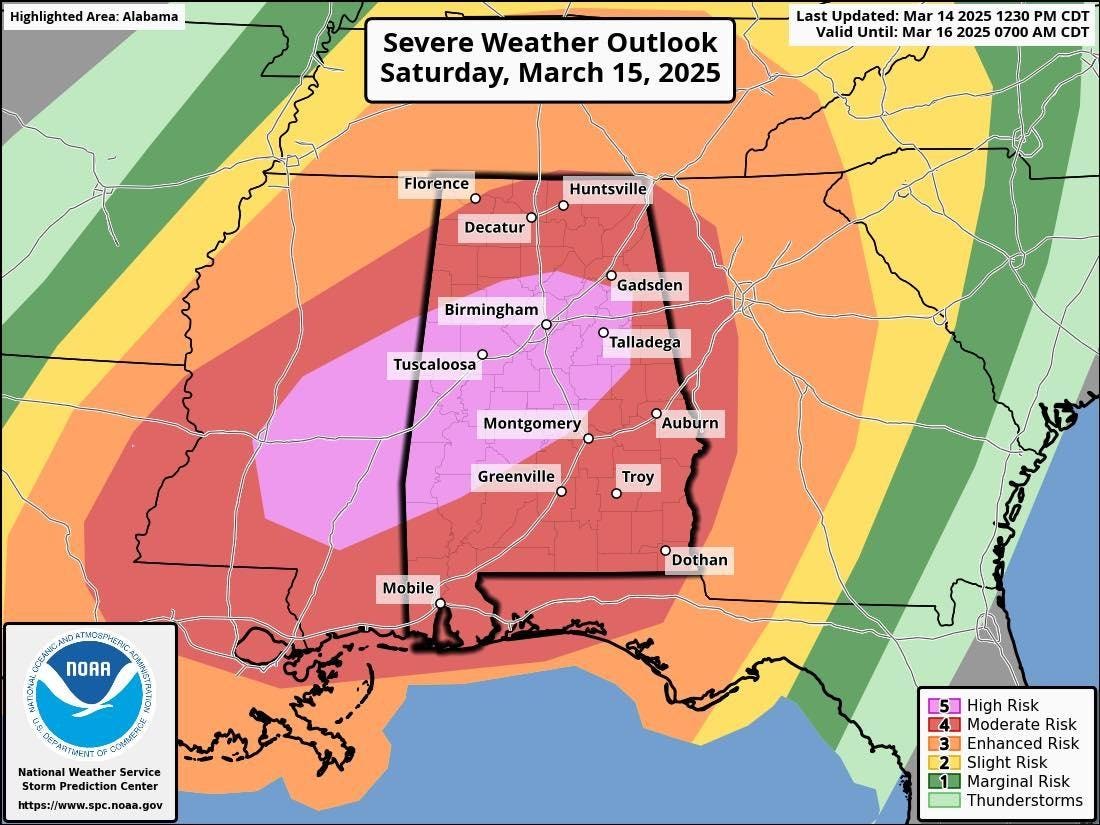TOPSHOT – A gigantic hydraulic and solar-powered machine called ‘Wanda’ collects plastic waste accumulated at the Juan Diaz River in Panama City on October 1, 2024. In two years, a gigantic hydraulic machine in a river in Panama City has prevented 256 tonnes of rubbish, mainly plastic bottles, from ending up in the mangroves of the Panamanian capital. (Photo by Martin BERNETTI / AFP) (Photo by MARTIN BERNETTI/AFP via Getty Images)
AFP via Getty Images
Pieces of plastic, including bottles, bags, straws and cutlery, make up two thirds of the rubbish found in rivers around the world, according to a new analysis.
The research by experts at the University of California, Santa Barbara, used on-the-ground data from Mexico, Jamaica, Panama, Ecuador, Kenya, Vietnam, Thailand and Indonesia.
Over the three-year period, local teams collectively removed and analyzed 3.8 million kilograms of river debris, the equivalent to 380,000,000 single-use plastic water bottles, with 66% classified as microplastic.
The researchers also found substantial variation in the amount of plastic pollution intercepted in rivers studied, but all contained plastic debris of some sort.
Based on their findings, researchers now estimate 1.95 million metric tons of travels down rivers worldwide every year.
The study has been published as negotiators in Geneva failed to reach an agreement on an international treaty to curb plastic pollution.
Lead author, Chase Brewster, a project scientist in University of California, Santa Barbara’s Benioff Ocean Science Laboratory, said it was largest continuous dataset, which has ever been produced on the subject of plastic pollution in rivers, in an interview.
Brewster added the research helps underline and scope and the scale of the issue around the world.
“This problem is not going away and it is global,” he told me. “We should not be ignoring in this day and age the fact two thirds of everything coming down our rivers is now plastic.”
Brewster said the researchers on the project also engaged with local communities and he hoped the data would help them take targeted action
“The more involved and engaged people are, and the more empowered they feel in their communities, the more likely they are to change behavior and influence legislation in their areas.
“More often than not, these communities are not trying to pollute. It’s the larger institutions who are failing them. There’s no access to waste management services, or other options.”
Brewster said the report makes a number of recommendations, including creating more of a value for plastic waste to discourage people from throwing it away and letting it go to waste.
He added one of the big problems is that it is still cheaper to produce virgin plastic than it is to make recycled plastic, so there need to be incentives like bottle deposit fees, and virgin production caps to create better market conditions for a circular economy.
The study also calls for greater support for the informal waste-picking sector in certain parts of the world and more investment in waste management and recycling infrastructure and services.
It also recommends more consistent and more transparent monitoring and data collection to inform targeted upstream actions.
In addition, it calls for well-designed local and national policies as well as ambitious international frameworks to address the different scales of the problem.
“Negotiators and country officials can use this data to assess the river plastic pollution problem in real life, look at differences in pollution in different places, and test ideas about what policies and systems are working,” Brewster added.
Anthony Merante, senior plastics campaigner at Oceana Canada, said the oceans have become the dumping grounds for the world’s plastic waste, in an email.
Merante added people have over-plasticized their lives and invested in single-use, disposable systems hoping that recycling will save us.
“Not a single river studied was free from plastic, emphasizing that this is a planetary problem we all must act to correct,” he said.
“The solution is clear; we need to reduce plastic production and use and invest in solutions that actually work like refill and reuse.”









